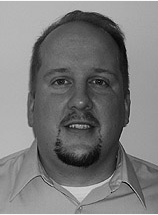Gulf Coast Conference: Increasing Density and Viscosity Throughput with Difficult Samples
On October 11th, 2023, Daniel Wolbrecht, senior technical sales consultant at Anton Paar, held a workshop at the Gulf Coast Conference in Galveston, Texas. The lecture, titled “Increasing Density and Viscosity Throughput with Difficult Samples” focused on how heated autosampler units can help analyze difficult samples.
Daniel Wolbrecht | Image Credit: © Gulf Coast Conference - gulfcoastconference.com

Manual sample loading can come with several disadvantages: namely, leaving room for human error (improper sample introduction, improper cleaning, skipping refills, possible air bubble introduction) and causing low productivity levels, Wolbrecht said.
“If you go back over your data, and you see that every single time they run, they’re getting both results and they’re both exactly the same every time, either they’re perfect, or they’re not actually doing reinjection,” he said.
Wolbrecht then explained the benefits of automated sampling, starting with time saving. Automating the process, he said, can reduce costs per measurement by allowing laboratory staff to focus on other tasks. Autosampling machines can measure various samples, including high-viscous samples via heated filling, and rinse themselves out with fixed and reduced solvent volumes, minimizing damage, and contamination. “They’re going to be able to focus on things that are more important for their time,” he said.
User-independent filing is possible once parameters are set, and that automated single sample introduction can have a flexible filing speed, which could lead to more accurate measuring results. Autosamplers can manually handle methods requiring multiple fills within repeatability, repeating the process until the desired amount of precision is met and the two best values are averaged, Wolbrecht said. This reduces the number of possible errors at the hands of operators and removes user handling bias.
Study Explores Thin-Film Extraction of Biogenic Amines via HPLC-MS/MS
March 27th 2025Scientists from Tabriz University and the University of Tabriz explored cellulose acetate-UiO-66-COOH as an affordable coating sorbent for thin film extraction of biogenic amines from cheese and alcohol-free beverages using HPLC-MS/MS.
Multi-Step Preparative LC–MS Workflow for Peptide Purification
March 21st 2025This article introduces a multi-step preparative purification workflow for synthetic peptides using liquid chromatography–mass spectrometry (LC–MS). The process involves optimizing separation conditions, scaling-up, fractionating, and confirming purity and recovery, using a single LC–MS system. High purity and recovery rates for synthetic peptides such as parathormone (PTH) are achieved. The method allows efficient purification and accurate confirmation of peptide synthesis and is suitable for handling complex preparative purification tasks.










